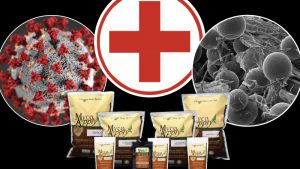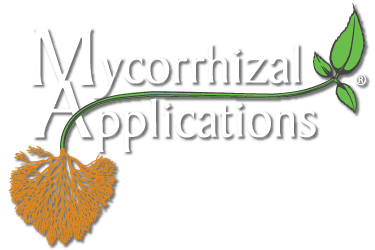
The United States’ economy was on a roll. It had experienced over ten years of economic expansion. The Great Recession of 2008 was in our rear-view mirror. Then, as all of us are aware, COVID 19 hit the world. As I write this article the United States has surpassed 180,000 lives lost. My thoughts and prayers go out to all the families that have been personally impacted by this terrible virus.
As a magnifier of the issue, the US economy became impacted by the Coronavirus. Fortunately for our industry, the impacts of COVID 19 on growers have been mostly positive. In a recent survey completed by Dr. Charlie Hall of Texas A&M, fifty-five top growers compared spring 2020 vs. spring 2019 performance. Over two-thirds of the growers reported sales flat or up for spring 2020 compared with 2019. Dr. Hall commented that a portion of the growers that reported lower sales were a result of self-imposed cutbacks in production.
Dr. Hall reported in the same presentation, if history is an indicator of future performance, there is uncertainty concerning the future performance of the horticultural industry. Hopefully, by next spring we will have started to move forward in our response to the Coronavirus. That means that in addition to the multiple hats you are currently wearing, you are now also the operation’s risk manager for your greenhouse and nursery crops.
In that same presentation, Dr. Charlie Hall also shared that the same fifty-five top growers reported 2019 sales of $1.5 billion. Additionally, Dr. Hall conveyed that the same group of growers reported $64 million dollars in shrink. Even though that shrink level is around 4.3% of total sales, it was a similar number to the reduction in net profits by the same grower group. In this ever-changing world, we can only hope to control processes that we can influence. And one of the processes we can influence is reducing shrink. Lowering shrink reduces risks and helps reduce costs which in turn improves profitability.
In your personal life, one of the ways we reduce risk is to buy insurance. This could be health, home, auto, etc. insurance. This article is not focused on talking you into purchasing a crop insurance policy, but more a crop assurance production process.
In a recent meeting, while reviewing mycorrhizal research with a leading researcher at a large state university, the researcher summarized the results of the trials by saying “Mycorrhizal Applications should include as part of its message to growers the aspect of considering mycorrhizal usage a form of crop insurance.” Let’s expand upon the message of mycorrhizal usage and its impact on crop assurance.
- For a young plant producer, the true cost of shrink can be the difference between what they seed or stick and the number of units they sell. For a seeded product, how much a grower has to overseed in growing extra units or in double or triple seeding to produce the desired number of units they have on order. For the liner producer, it is the extra growing units that need to be stuck so that you have enough overage to cover the needed production order. Or it can be selling a tray with a guaranteed minimum number of viable plants that is below the cell count. It is important to also remember that the cost of plant material has increased dramatically, so the extra genetics a young plant grower needs to grow to cover their orders can be substantial.
- For the finished grower, the true cost of shrink is the difference between the number of plants you start with and the number of plants you sell and get paid for by your retail or landscape customer. It is important to remember the higher the input costs which typically come as the product is getting ready to be sold, the greater the loss for any plant lost to shrink.
Key Factors to Consider when Using Mycorrhizae for your Crop Assurance to Reduce Risk
- Start the Clock – Apply mycorrhizae early, whenever it makes sense: before germination, at the time of sticking, or upon receipt of plugs or rooted liners to help minimize the time needed for the plants to benefit from mycorrhizal symbiosis and for you as the grower to start benefiting.
- Multiple Species – Consider using a product with more than one species to maximize the potential for earlier benefits from the mycorrhizal relationship. MycoApply® horticultural products contain a minimum of four endomycorrhizal species.
- Improved Root Network – Mycorrhizae will not cause a cutting to initiate rooting (like an auxin), but it will work to strengthen and increase the root mass of the plug/cutting helping it to survive and thrive in the greenhouse, nursery, or garden.
- Lowest Cost Option – Application at the time of propagation or the earliest time you work with the plants is the more cost-effective method for applying mycorrhizae since the soil volume is the smallest and the mycorrhizae treated plants will maintain their symbiotic relationship no matter how many times the plant is transplanted into a larger container or into the landscape.
- Production Automation – Young plants grown with mycorrhizae will have a stronger root system making them a better candidate for automatic transplanters.
- Increased Scans – For those growers working with retailers that pay you when the product is sold, you live or die by your scan (you want it high) and shrink rates (you want it low). You want your plants to attract attention and drive customer demand so your sell-through is better. Mycorrhizal usage allows the plant to be retail ready during unloading at the retailer and then it works to maintain the performance of the plant for improved shelf life.
- Fewer Returns – Growers also want to reduce product returns. Mycorrhizal usage allows the plant to maintain top performance in the garden since it works to reduce transplant shock. Container performance is better because the mycorrhizae increase water and nutrient uptake. This helps the container last longer and continue to perform, even under the stresses imposed by most consumer gardeners.
- Added Value – In addition to the grower benefiting from mycorrhizae usage during production, you are also adding value to your finished plants that will benefit the retailer/home gardener or the landscaper.
- Reputation – Most growers include their company’s name on the plant label. If the plant performs better due to mycorrhizae usage, it will be remembered by the home gardener. An improved grower and product reputation are always a prize worth working for.
It is important to think of shrink as both a lost opportunity to make money and reduction in profitability. Product shrink is a significant business risk. Mycorrhizae is an important tool in the grower’s toolbox that can help growers reduce shrink. And by reducing shrink, you reduce your business’s exposure to the economic uncertainty caused by unforeseen and unprecedented challenges like those posed by COVID 19. Mycorrhizal usage allows a grower to reduce risk and be more assured their crop will be successful during production, at retail, and in the garden.
Article by: Blair Busenbark
Mycorrhizal Applications – Sales and Commercial Marketing Manager
September 4, 2020







